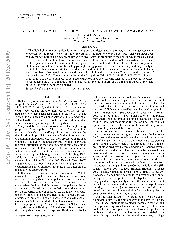摘要
The GeV light curve of a pulsar is an important probe to detect acceleration regions in its magnetosphere. Motivated by the recent reports on the observations of pulsars by the Fermi Large Area Telescope, we restudy the two-pole caustic model and revise it to investigate the properties of the light curves in the GeV band. In the revised model, although acceleration gaps can extend from the star surface to the light cylinder along near the last open field lines, the extension of the gaps along the azimuthal direction is limited because of photon-photon pair production process. In such gaps, high-energy photons are emitted uniformly and tangentially to the field lines but cannot be efficiently produced along these field lines where the distances to the null charge surface are larger than similar to 0.9 times the distance of the light cylinder, and the effective azimuth extension of the gaps is about 230 degrees. The model is applied to the four pulsars, Vela, PSR J1028-5819, PSR J0205+6449, and PSR J2021+3651, whose light curves obtained with Fermi have been recently released. The model is successful in reproducing the general feature of the light curves for the four pulsars, and the radial distances of the radio pulse for the four pulsars are estimated.
- 出版日期2010-2-1
- 单位云南大学
